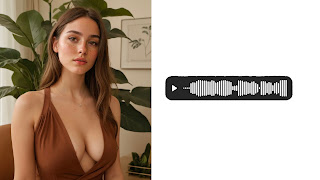Commented on your photo, tap here to respond.
The Evolution of Cinematic Storytelling: Movies vs. Seasons.
Cinematic storytelling has undergone significant transformations, offering audiences diverse ways to engage with fiction. Movies and seasons, two popular formats, cater to different tastes and preferences. This article explores their differences, pros and cons.
Differences Between Movies and Seasons.
1. Length and Pacing: Movies typically range from 90-180 minutes, while seasons consist of episodic content, often 20-60 minutes per episode.
2. Narrative Structure: Movies follow a self-contained narrative, whereas seasons feature ongoing storylines with cliffhangers.
3. Character Development: Seasons allow for deeper character exploration due to extended screen time.
4. Genre Flexibility: Seasons can blend genres, while movies usually adhere to a specific genre.
Types of Movies.
1. Blockbusters: High-budget films with mass appeal.
2. Art House: Experimental, avant-garde cinema.
3. Independent: Low-budget, often critically acclaimed films.
4. Documentaries: Non-fiction, informative films.
Types of Seasons.
1. Episodic: Self-contained episodes with minimal continuity.
2. Serialized:
Ongoing storylines with each episode building upon the previous.3. Anthology: Standalone episodes with unique narratives.
4. Mini-Series: Limited-episode seasons, often based on novels or true events.
Pros of Movies.
1. Concise Storytelling: Compact narrative with clear resolution.
2. Immersive Experience: Engaging, uninterrupted viewing.
3. Cinematic Spectacle: Big-screen visuals and sound design.
Cons of Movies.
1. Limited Character Development: Time constraints.
2. Rushed Pacing: Overwhelming narrative.
3. High Production Costs: Budget constraints.
Pros of Seasons.
1. In-Depth Characterization: Extended screen time.
2. Complex Storytelling: Multi-episode narratives.
3. Cliffhangers and Suspense: Ongoing engagement.
Cons of Seasons.
1. Prolonged Commitment: Time investment.
2. Unpredictable Quality: Variable episode quality.
3. Cliffhanger Frustration: Waiting for resolutions.
The Future of Cinematic Storytelling.
1. Streaming Platforms: Shift to online content.
2. Hybrid Formats: Blending movie and season elements.
3. Interactive Storytelling: Immersive experiences.
Conclusion.
Movies and seasons cater to distinct audience preferences. Understanding their differences, pros and cons helps creators craft engaging narratives and viewers appreciate the unique strengths of each format.
References.
1. Box Office Mojo. (2022). Movie Industry Trends.
2. Variety. (2022). TV Season Ratings.
3. The Hollywood Reporter. (2022). Streaming Wars.
4. IndieWire. (2022). Independent Film Trends.
5. ScreenDaily. (2022). Global Film Industry Analysis.




I'm not going to be posting here anymore Jess so don't send me messages to reply here I luv you but be real and respond to me you never do so why should I isee you respond to every one else so this is the last time I got real
ReplyDeleteJust say the guys name so we can all go home. I hope your talking to me but after seeing everyone suffering because you won't say his name . I'm just wondering weather to stay too!
ReplyDeleteHi baby ❤️. I am here….Juanito De La Noche❤️❤️
ReplyDeleteHey how are you I'm so sorry I didn't see your message
ReplyDelete